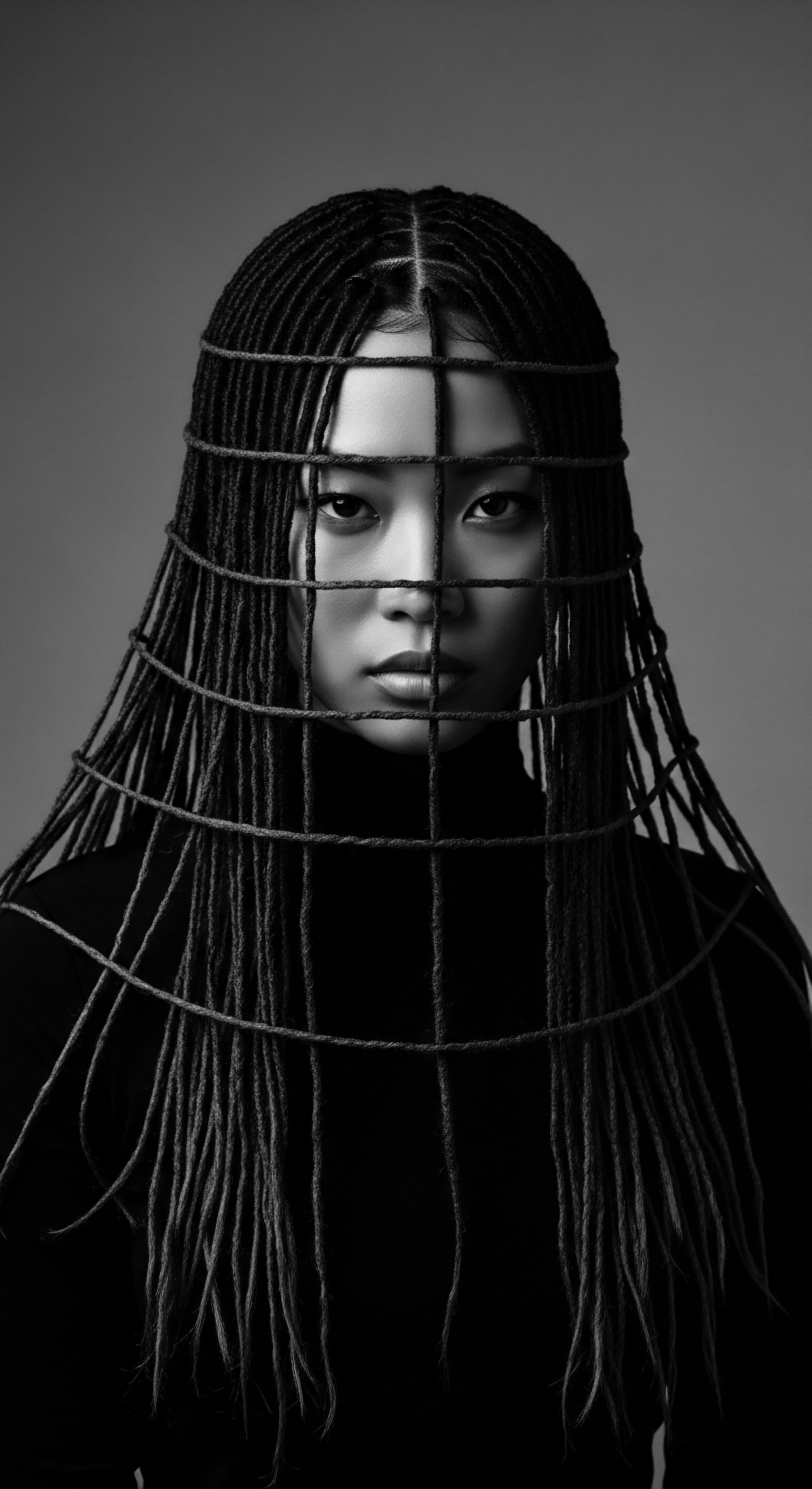
Fundamentals
The Nighttime Care of textured hair represents far more than a simple routine performed before slumber; it embodies a deeply ingrained practice, a legacy passed through generations, vital for preserving the unique integrity of curls, coils, and waves. At its core, this care refers to the intentional methods and rituals applied to hair during evening hours, specifically designed to shield it from friction, moisture loss, and mechanical stress that can occur as one rests. For those with textured hair, this period of stillness presents both a vulnerability and an opportunity for profound restorative work.
Consider the intrinsic nature of textured hair ❉ its distinct structure, characterized by varying degrees of curl and coil, renders it more susceptible to dryness and breakage than straighter hair types. The raised cuticle layers, while beautiful in their architecture, allow moisture to escape more readily. As individuals shift during sleep, hair rubs against fabrics, leading to tangles, frizz, and the disruption of delicate strand bonds.
Without a conscious effort to safeguard these strands, the morning often greets one with diminished vibrancy and increased fragility. The wisdom of Nighttime Care, therefore, stems from an understanding of this inherent susceptibility, a knowing that spans centuries.
Nighttime Care for textured hair is a foundational practice, a quiet ritual of protection that honors the inherent vulnerability and beauty of curls, coils, and waves.
From its simplest interpretation, Nighttime Care involves creating a protective environment for the hair. This can be as straightforward as gathering the hair into a loose pineapple or bun atop the head, minimizing contact with pillows. Such actions, seemingly minor, significantly reduce the surface area exposed to friction. The deliberate act of preparing hair for rest signals a mindful connection to one’s strands, recognizing them not merely as adornment, but as living extensions deserving of thoughtful attention.
Within the vast repository of Roothea’s ‘living library,’ Nighttime Care stands as an elemental practice, a quiet conversation between the individual and their ancestral hair. It is a daily acknowledgment of hair’s delicate needs, a preventative measure that safeguards its strength and vitality. This fundamental understanding forms the bedrock upon which more complex and culturally rich practices have been built over time.

The Gentle Art of Preservation
The earliest iterations of Nighttime Care were born from necessity and observation. Ancestral communities, intimately connected to the rhythms of nature and the demands of daily life, understood the importance of preserving hair, a symbol of identity, status, and connection to the spiritual realm. They recognized that prolonged exposure to elements, coupled with the wear of sleep, could diminish hair’s luster and health. The solutions devised were often ingenious, utilizing readily available natural materials.
- Headwraps ❉ These coverings, crafted from various cloths, served as a primary shield against dust, insects, and the abrasive effects of sleeping surfaces. Their historical presence across diverse African cultures speaks to a shared understanding of hair protection.
- Braiding ❉ Simple, loose braids or twists, often created before rest, prevented tangling and breakage, keeping hair neatly contained and minimizing friction. This ancestral technique remains a cornerstone of modern Nighttime Care.
- Natural Oils and Butters ❉ Applying emollients like shea butter or palm oil provided a protective barrier, sealing in moisture and adding a layer of slip to reduce friction. These substances were not just conditioners; they were elixirs of preservation.
These foundational practices, though simple, carry profound historical weight. They are not merely functional steps; they are echoes of ancient wisdom, whispering through the generations, reminding us that care for textured hair has always been a deliberate, thoughtful endeavor. The Nighttime Care ritual, even in its most basic form, represents a continuous thread connecting contemporary practices to the enduring heritage of hair.
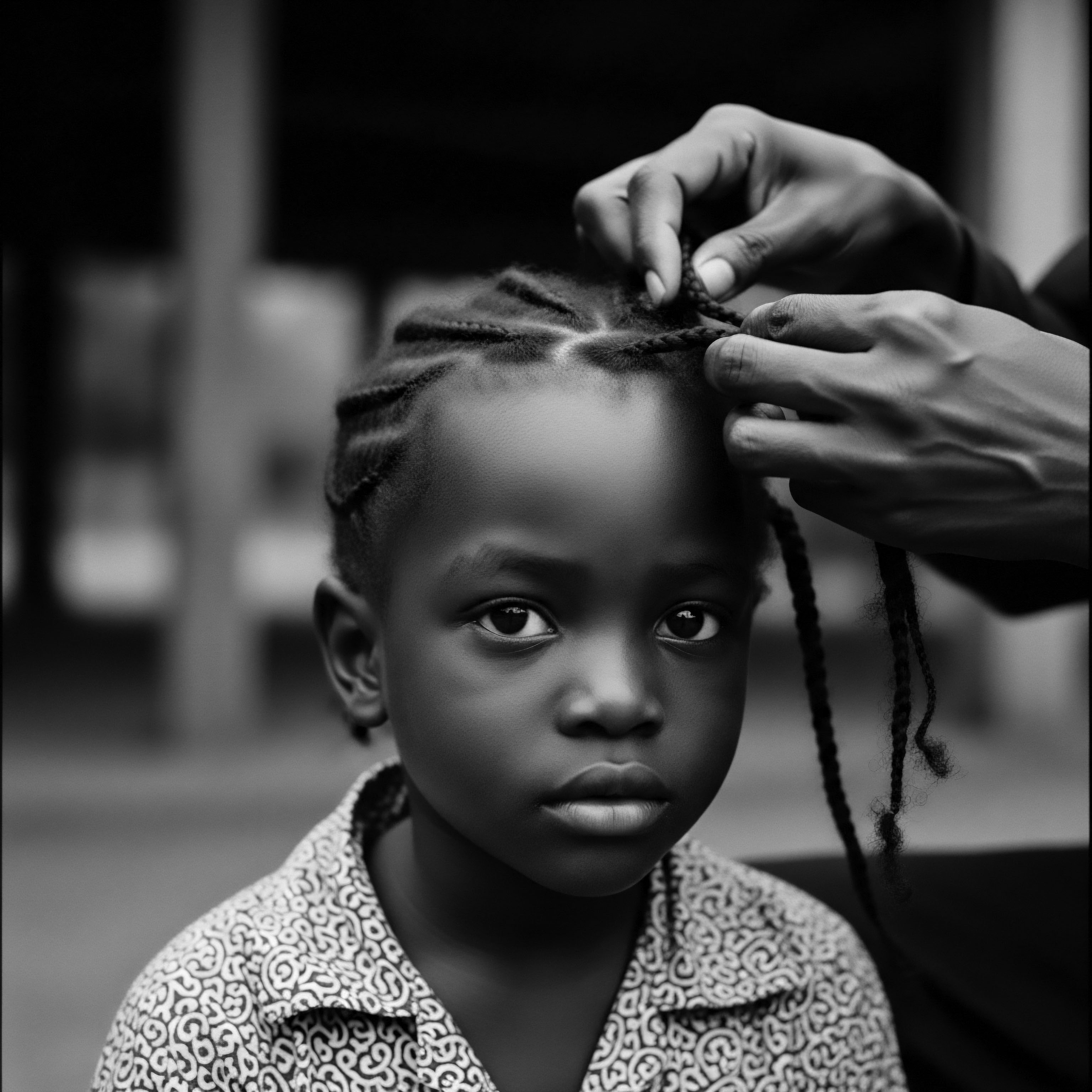
Intermediate
Moving beyond the foundational aspects, an intermediate understanding of Nighttime Care for textured hair reveals its profound interplay with both the biological characteristics of the hair shaft and the rich cultural tapestry from which these practices emerged. This deeper appreciation acknowledges that the night is not merely a period of inactivity, but a crucial window for hair regeneration and protection, especially for strands that bear the legacy of coils and kinks. The intermediate perspective recognizes that the strategies employed during these hours are not arbitrary; they are responses to the unique physiological demands of textured hair and reflections of centuries of collective knowledge.
Textured hair, with its elliptical cross-section and varied curl patterns, possesses an inherent fragility. The points where the hair strand bends are structurally weaker, making them more susceptible to breakage. This vulnerability is exacerbated by friction, particularly during sleep when hair rubs against pillowcases. The continuous mechanical stress can lead to the lifting of the cuticle, causing frizz, dryness, and ultimately, hair loss.
Nighttime Care, therefore, transforms from a simple habit into a strategic intervention, designed to mitigate these challenges. It becomes a conscious act of preserving the delicate architecture of each strand.
Intermediate Nighttime Care for textured hair recognizes the biological fragility of coils and kinks, transforming routines into strategic interventions that protect and preserve.
The deliberate choice of materials for head coverings and pillowcases shifts from mere convenience to a scientifically informed decision. Fabrics like silk and satin, with their smooth surfaces, drastically reduce friction compared to cotton. This reduction in friction minimizes cuticle damage, helping to retain the hair’s natural moisture and prevent tangles.
This contemporary understanding validates the historical wisdom of using softer, smoother materials for hair coverings, a practice that, though perhaps not articulated in scientific terms centuries ago, yielded the same protective benefits. The evolution of this understanding underscores a continuous dialogue between ancestral observation and modern scientific validation.

The Ancestral Imperative of Moisture Retention
A cornerstone of intermediate Nighttime Care is the emphasis on moisture retention. Textured hair is prone to dryness due to its structural properties and the slower distribution of natural scalp oils along the coiled shaft. The night provides an undisturbed period for deep conditioning and sealing in hydration.
This often involves applying leave-in conditioners, moisturizing creams, or natural oils before protective styling. These applications work synergistically with the protective measures, creating an environment where hair can absorb and retain vital moisture, preparing it for the day ahead.
The historical precedent for this moisture-centric approach is deeply rooted in African traditional hair care. Communities across the continent, long before the advent of modern cosmetic science, utilized a diverse pharmacopeia of plant-derived emollients and humectants. These substances were not only used for their conditioning properties but also for their symbolic and spiritual significance. The act of anointing hair with these natural gifts was a ritual of blessing, protection, and connection to the earth’s bounty.
| Ingredient Shea Butter (Karité) |
| Cultural Origin/Use West Africa (e.g. Ghana, Burkina Faso). Used for centuries by various ethnic groups. |
| Nighttime Benefit (Traditional Understanding) Provided a protective barrier, sealed moisture, promoted softness, and shielded hair from harsh environmental conditions during sleep. |
| Ingredient Palm Oil |
| Cultural Origin/Use West and Central Africa. Integral to daily life and rituals. |
| Nighttime Benefit (Traditional Understanding) Nourished the scalp and hair, imparted shine, and was believed to fortify strands against breakage. |
| Ingredient Coconut Oil |
| Cultural Origin/Use Coastal regions of Africa, also prevalent in Caribbean and Asian diasporic practices. |
| Nighttime Benefit (Traditional Understanding) Penetrated the hair shaft to reduce protein loss, added lubrication, and was used to keep hair supple overnight. |
| Ingredient Aloe Vera |
| Cultural Origin/Use Indigenous to parts of Africa. Applied for medicinal and cosmetic purposes. |
| Nighttime Benefit (Traditional Understanding) Soothed the scalp, provided hydration, and helped to detangle hair gently before protective styling for rest. |
| Ingredient These ingredients underscore a legacy of botanical wisdom, where nature provided the means to safeguard textured hair through the night. |
The selection of a specific Nighttime Care style, such as twists, braids, or bantu knots, moves beyond mere aesthetics in an intermediate understanding. These styles serve as strategic containers for moisture and protective frameworks that minimize manipulation. The very act of sectioning and coiling hair before bed becomes a meditative practice, a moment of intentionality that reinforces the connection between hair health and overall well-being. This deliberate preparation allows the hair to rest undisturbed, minimizing the need for extensive styling and manipulation in the morning, thereby reducing daily wear and tear.
Understanding Nighttime Care at this level involves appreciating the nuanced relationship between hair structure, environmental factors, and the wisdom of inherited practices. It is about recognizing that every choice, from the material of a pillowcase to the type of product applied, contributes to the long-term health and vitality of textured hair, echoing a continuum of care that spans generations.
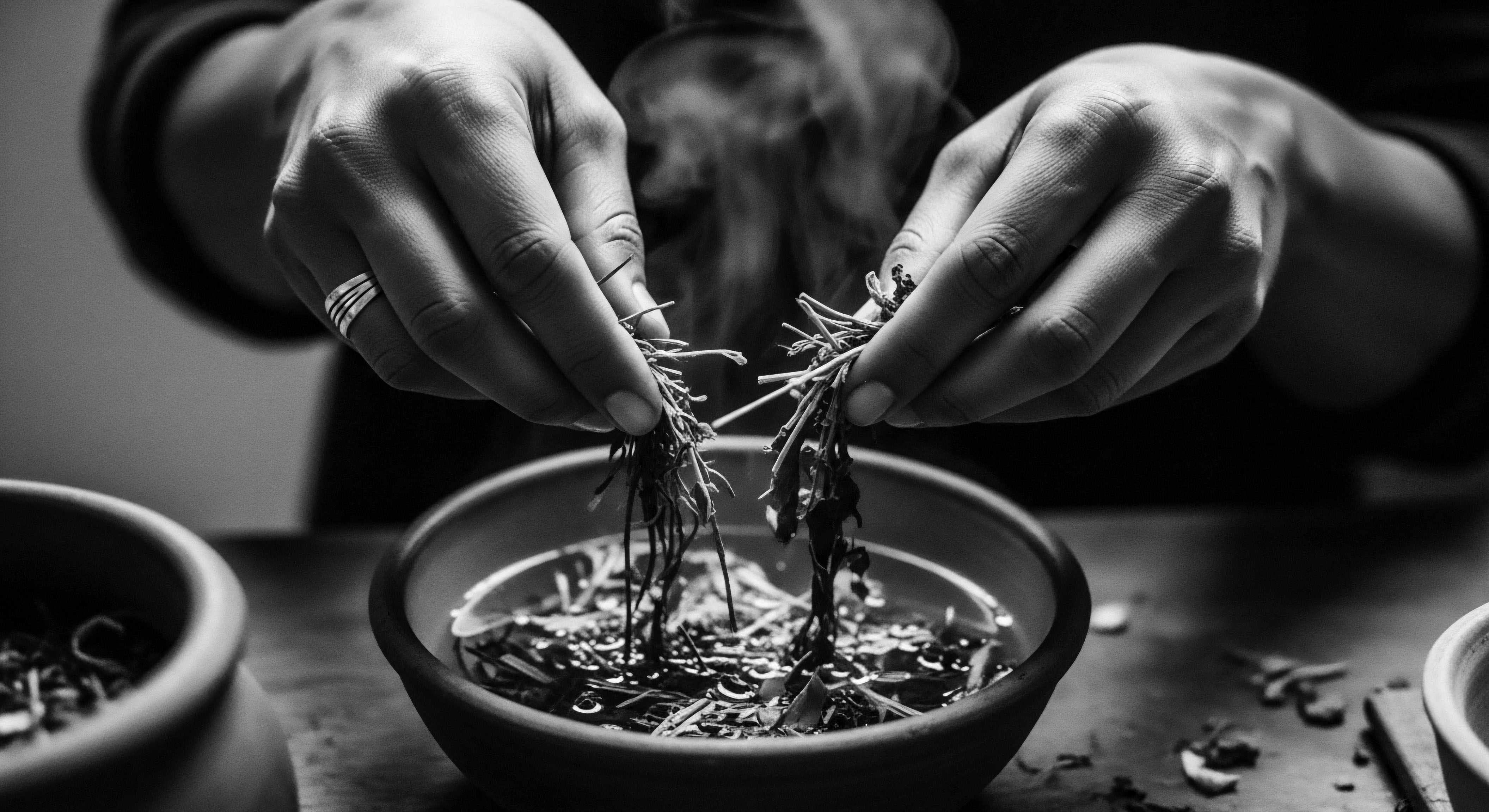
Academic
The academic delineation of Nighttime Care, particularly as it pertains to textured hair, transcends mere cosmetic application; it stands as a multifaceted socio-cultural, physiological, and historical phenomenon. This scholarly perspective frames Nighttime Care not simply as a series of actions, but as a deeply embedded practice that mitigates biomechanical stress on hair fibers, preserves hydration equilibrium, and serves as a profound expression of identity and cultural continuity within communities of African descent. It is a critical aspect of hair maintenance that directly addresses the inherent structural characteristics of highly coiled or curly hair, which are more prone to desiccation and mechanical abrasion compared to straighter hair types.
The deliberate interventions performed before sleep create an optimal microenvironment for hair integrity, reducing cuticle damage, minimizing tangling, and thereby decreasing the incidence of breakage and split ends. This sustained protection contributes significantly to hair length retention and overall fiber health, a concept often overlooked in broader dermatological discourse.
The significance of Nighttime Care within Black and mixed-race hair experiences cannot be overstated, extending far beyond the purely functional. It represents a living archive of ancestral wisdom, a practice forged in resilience and adaptation. The systematic preparation of hair for rest, often involving intricate braiding, twisting, or wrapping techniques, speaks to a deep, embodied knowledge of hair science, predating formal academic inquiry.
This knowledge was transmitted orally and through demonstration, adapting to new environments and challenges, particularly during the transatlantic slave trade and its aftermath. The rituals of Nighttime Care became a quiet act of self-preservation, a reclamation of dignity in contexts designed to strip it away.
Nighttime Care is a profound socio-cultural and physiological phenomenon for textured hair, serving as a critical intervention for hair health and a vibrant expression of cultural identity.
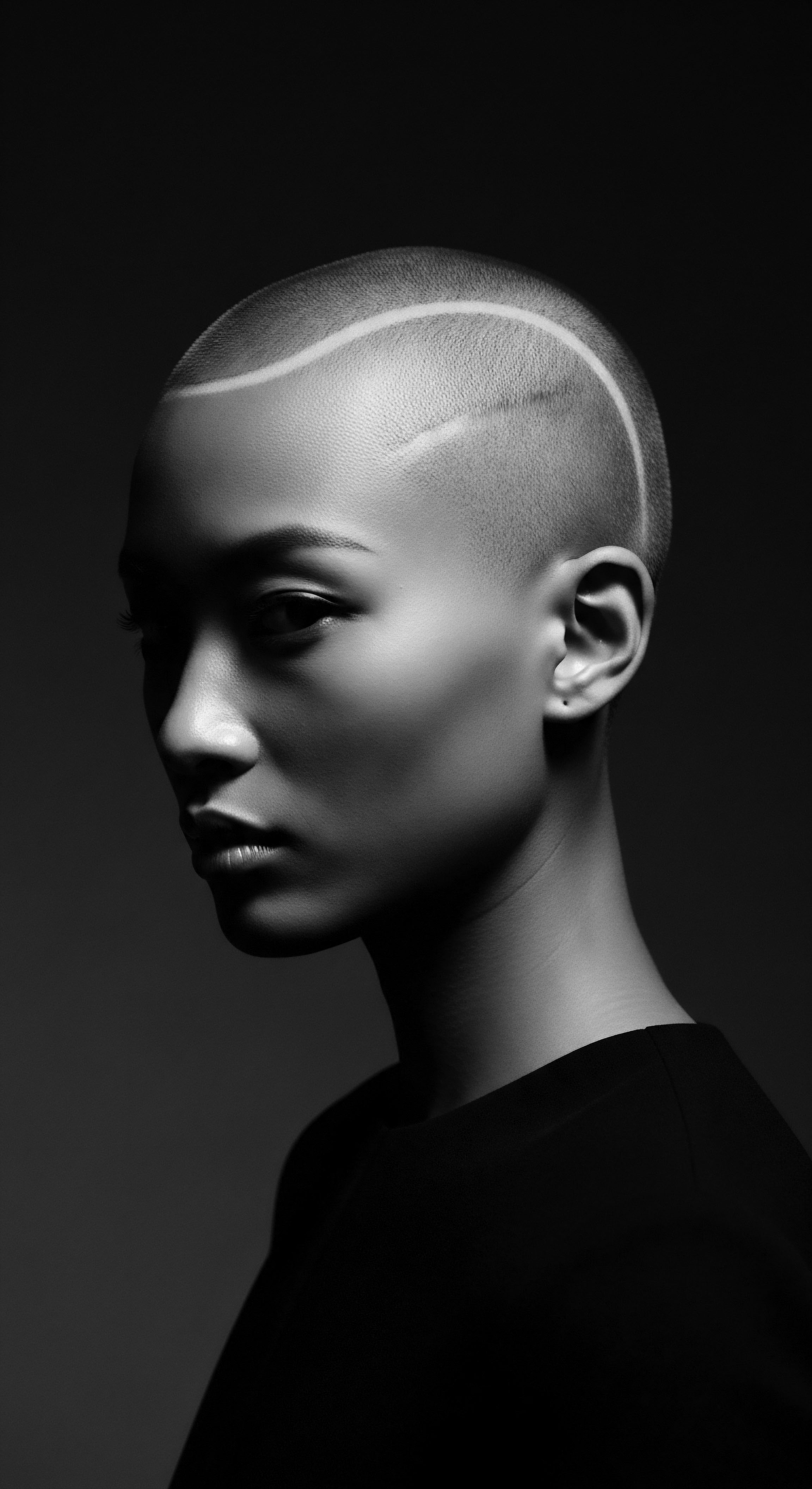
The Enduring Legacy of the Headwrap and Sleeping Cap
A powerful historical example that illuminates the profound connection of Nighttime Care to textured hair heritage is the enduring significance of the headwrap and its descendant, the sleeping cap or bonnet, within African American communities. Originating from diverse West African traditions where head coverings held spiritual, social, and aesthetic meanings, the practice of wrapping hair became a vital tool for survival and cultural continuity during enslavement in the Americas. While head coverings were sometimes mandated by oppressive sumptuary laws to denote enslaved status, within the confines of private spaces, the practice evolved into a protective ritual.
Enslaved women, through ingenious adaptation, used available scraps of fabric to shield their hair from the harsh realities of forced labor and the abrasive surfaces of rudimentary sleeping conditions. This practice was not merely about maintaining neatness; it was a desperate attempt to preserve hair health against immense odds, mitigating breakage and dryness that could be exacerbated by manual labor and poor nutrition.
Post-emancipation, as African Americans navigated newfound, albeit limited, freedoms, the practice of Nighttime Care continued to evolve, with the sleeping cap or bonnet becoming a ubiquitous item in households. As noted by Byrd and Tharps (2001), these coverings served a dual purpose ❉ practical protection of intricate hairstyles and a private symbol of self-respect and order. The bonnet became an essential tool for preserving styled hair overnight, preventing tangles and friction against cotton pillowcases, which were commonplace.
This pragmatic utility was intertwined with a deeper cultural resonance; the act of donning a bonnet before sleep was a private ritual, a moment of care for one’s physical self in a world that often denied such consideration. It underscored the understanding that hair, particularly textured hair, required deliberate and consistent protection to thrive.
The widespread adoption of the sleeping cap is not merely anecdotal; it is a testament to a collective, inherited wisdom concerning hair preservation. In a period when access to specialized hair products was limited and the understanding of textured hair’s unique needs was often dismissed by mainstream beauty industries, Black women autonomously developed and transmitted effective strategies. The bonnet, therefore, represents a form of self-reliant care, a practical solution born from necessity and refined through generations of lived experience.
It facilitated the maintenance of hair health, allowing for the longevity of protective styles like braids and twists, and minimizing daily manipulation that could lead to damage. This historical example powerfully illustrates how Nighttime Care practices, often simple in their execution, carried immense weight in the preservation of hair, cultural identity, and personal dignity against a backdrop of systemic challenges.
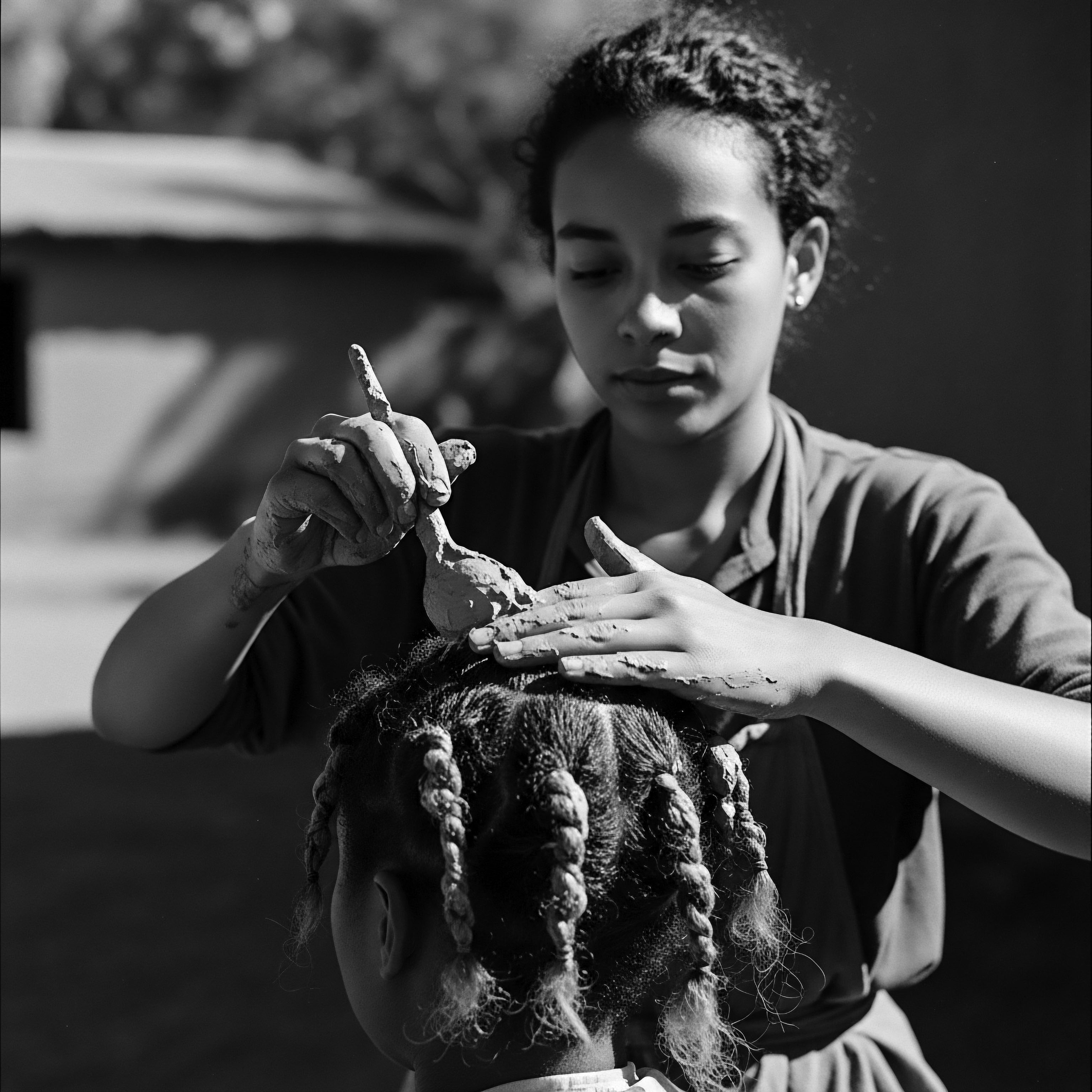
Biophysical Considerations and Hydration Dynamics
From a biophysical standpoint, Nighttime Care for textured hair directly addresses the challenges posed by its unique morphology. The helical structure of coiled hair results in numerous points of contact along the hair shaft, increasing the potential for inter-fiber friction. This friction, particularly against common bedding materials like cotton, can abrade the cuticle layer, leading to increased porosity and a compromised moisture barrier. When the cuticle is lifted, the hair loses water more rapidly, resulting in dryness, brittleness, and a greater propensity for breakage.
The application of humectants and emollients, such as natural oils or creams, prior to protective styling at night, creates a hydrophobic barrier that seals the cuticle and retards transepidermal water loss from the hair shaft. This process, often referred to as “sealing,” is critical for maintaining the hair’s elasticity and pliability. Moreover, the practice of loose protective styles, such as “pineappling” (gathering hair loosely atop the head), large twists, or braids, serves to consolidate the hair mass, reducing individual strand exposure to friction and tangling. This strategic bundling minimizes mechanical stress and preserves the structural integrity of the hair fiber, promoting optimal conditions for repair and replenishment during rest.
The choice of sleeping surface material also plays a significant role. Cotton, with its absorbent and fibrous nature, can wick moisture from the hair and create considerable friction. Conversely, smooth fabrics like silk or satin offer a low-friction surface, allowing hair to glide rather than snag.
This reduces mechanical stress on the hair shaft and minimizes the disruption of the cuticle, thereby preserving hydration and reducing frizz. The academic understanding of Nighttime Care integrates these biophysical principles with historical and cultural practices, recognizing that the efficacy of traditional methods often aligns with contemporary scientific explanations of hair fiber behavior.
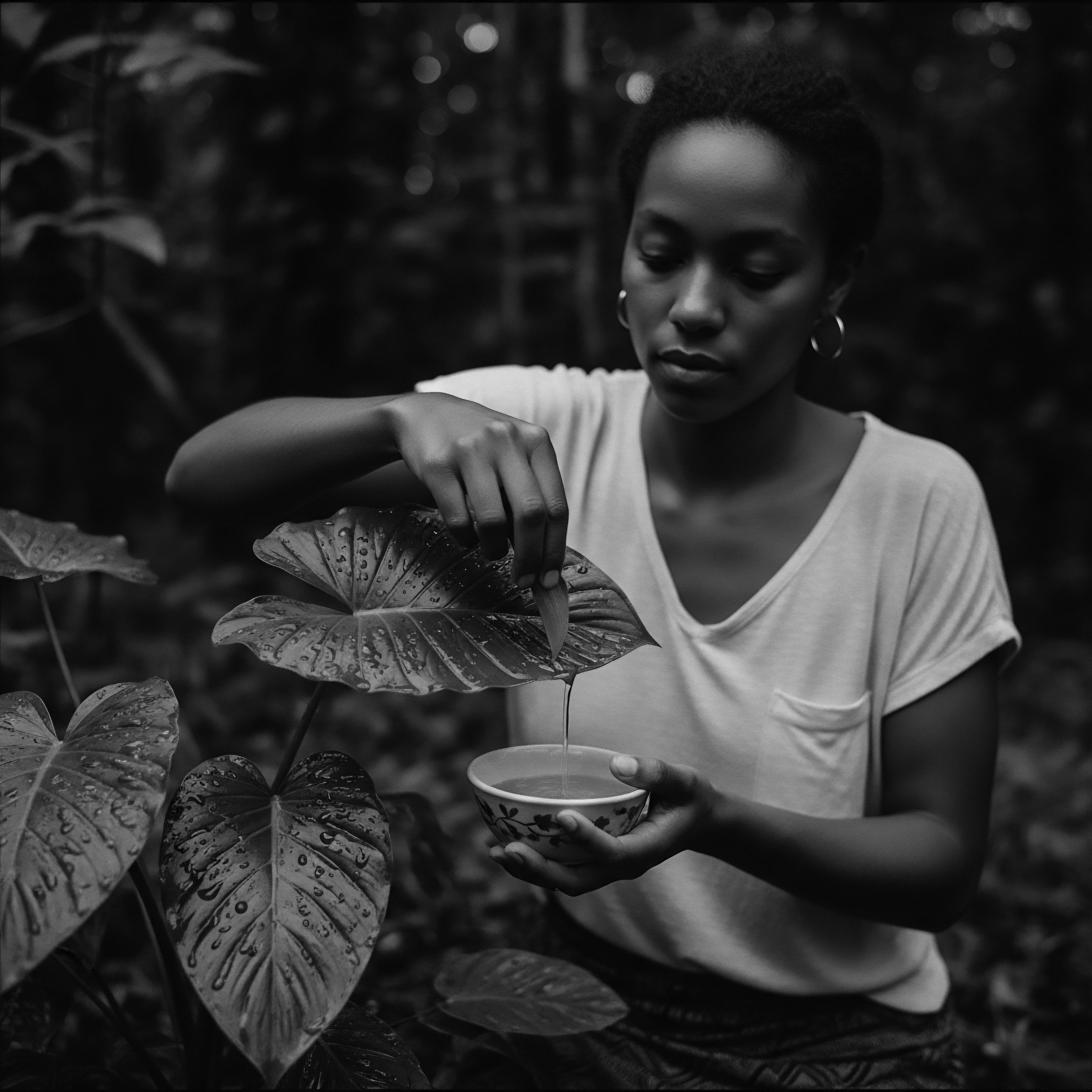
Psychological and Sociological Dimensions
Beyond its physiological benefits, Nighttime Care possesses profound psychological and sociological dimensions within textured hair communities. The ritualistic aspect of preparing one’s hair for sleep can serve as a meditative practice, fostering a sense of self-care and personal agency. In societies where textured hair has historically been subjected to marginalization or scrutiny, the private act of Nighttime Care can become a sanctuary, a space for self-acceptance and affirmation. It reinforces the value of one’s natural hair, irrespective of external beauty standards.
Furthermore, the intergenerational transmission of Nighttime Care practices contributes to cultural cohesion and the perpetuation of heritage. Mothers, grandmothers, and aunties passing down specific techniques, preferred ingredients, and the underlying philosophy of hair preservation reinforce familial bonds and collective identity. This oral tradition ensures that the knowledge of how to care for textured hair, often developed outside mainstream institutions, continues to thrive.
It underscores the idea that hair is not merely an appendage, but a living connection to one’s lineage and a symbol of enduring cultural pride. The continuous adaptation and evolution of these practices across generations speak to their enduring relevance and their capacity to adapt to changing social and environmental contexts.

Reflection on the Heritage of Nighttime Care
As we conclude this exploration, the Nighttime Care of textured hair reveals itself not as a fleeting trend, but as an enduring testament to ancestral ingenuity and a continuous dialogue between past wisdom and present understanding. From the elemental biology of the hair strand to the intricate rituals passed down through generations, this practice embodies the very ‘Soul of a Strand’ ethos – a profound meditation on hair’s heritage and its continuous care. It is a quiet yet powerful affirmation of identity, a daily commitment to preserving the beauty and strength that resides within each coil and kink. The protective embrace of Nighttime Care is a whisper from our forebears, a reminder that true beauty lies not in conforming, but in nurturing the unique legacy we carry.
The journey of Nighttime Care, from its ancient origins in communal practices to its contemporary expressions, mirrors the resilience and adaptability of textured hair itself. It stands as a vibrant thread in the vast, living library of Roothea, a story of care that transcends time and geography. Each silk bonnet donned, each section twisted, each natural oil applied before slumber is a continuation of a sacred tradition, a quiet act of defiance against narratives that sought to diminish the beauty of textured hair. It is a practice that empowers, connects, and continually reminds us of the profound historical depth embedded in every strand.
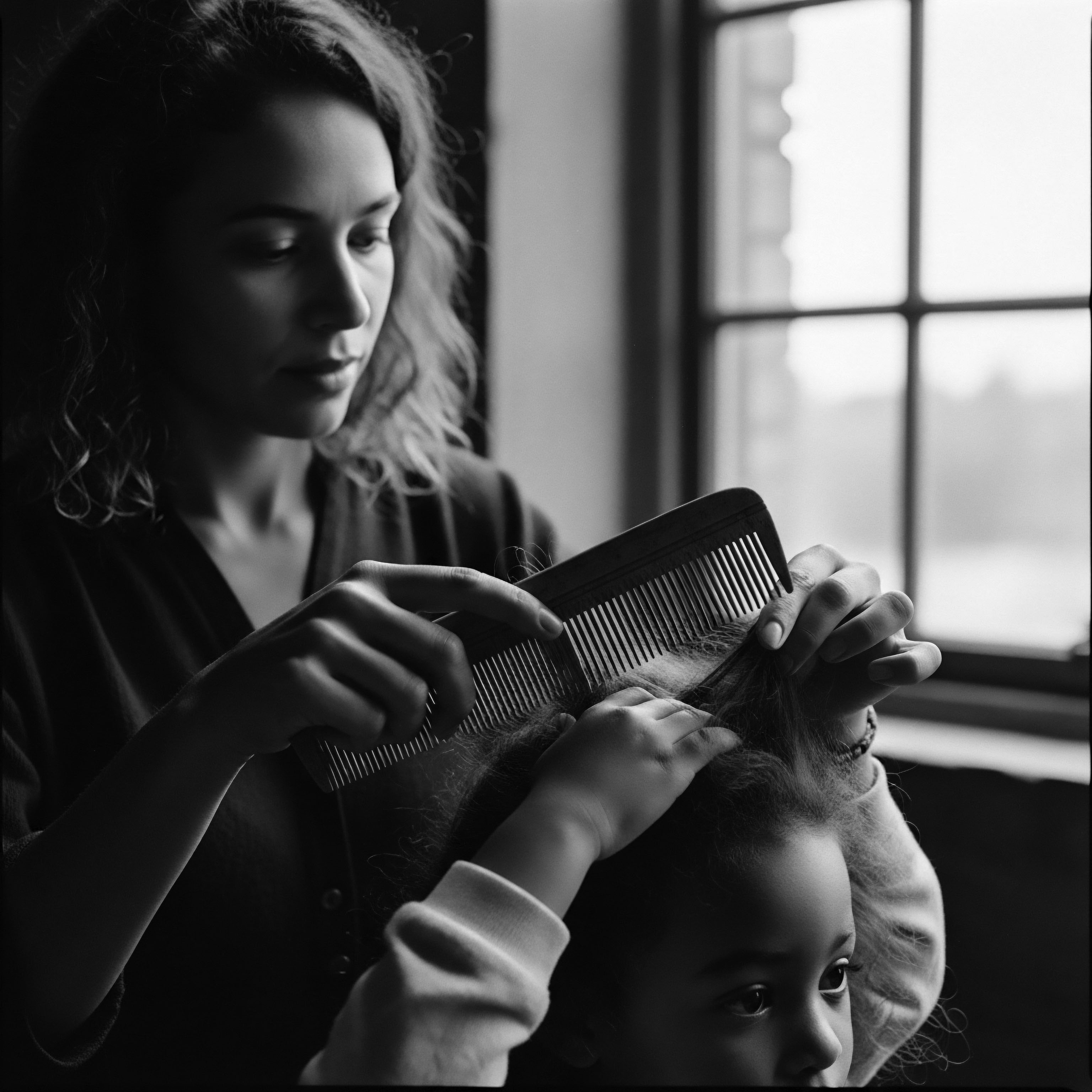
References
- Byrd, A. & Tharps, L. (2001). Hair Story ❉ Untangling the Roots of Black Hair in America. St. Martin’s Press.
- Diedrich, L. (2007). Biological and Sociocultural Aspects of Hair. In The Routledge Companion to the Body. Routledge.
- Opoku-Prah, R. (1995). African Hairitage ❉ A Guide to African Hair Care. One World Press.
- Robbins, C. R. (2012). Chemical and Physical Behavior of Human Hair. Springer.
- Banks, I. (2000). Hair Matters ❉ Beauty, Power, and the Politics of Hair. New York University Press.
- Thompson, S. (2008). The African American Hair Book ❉ The Essential Guide to Hair Care and Styles for African American Women. Simon & Schuster.
- Sherrow, V. (2006). Encyclopedia of Hair ❉ A Cultural History. Greenwood Press.
- Gittens, S. (2008). The Natural Hair Handbook ❉ The Definitive Guide to Natural Hair Care and Styling. CreateSpace Independent Publishing Platform.
- Okoro, N. (2013). The Hair Care Revolution ❉ A Guide to Natural Hair Care. Createspace Independent Publishing Platform.
